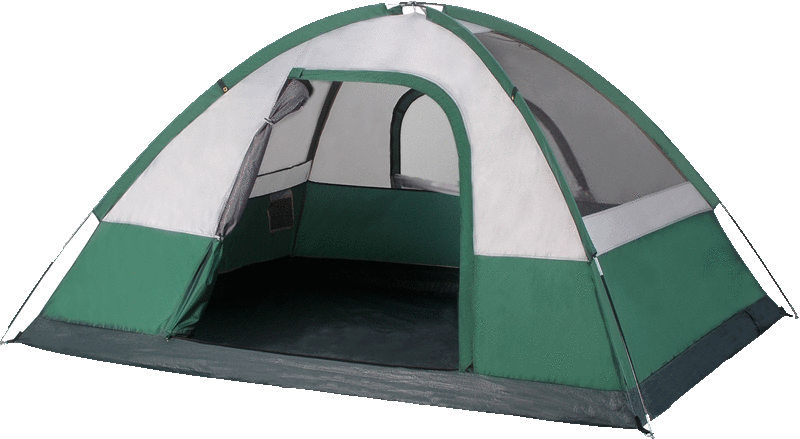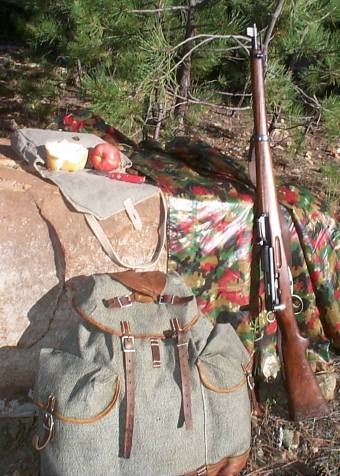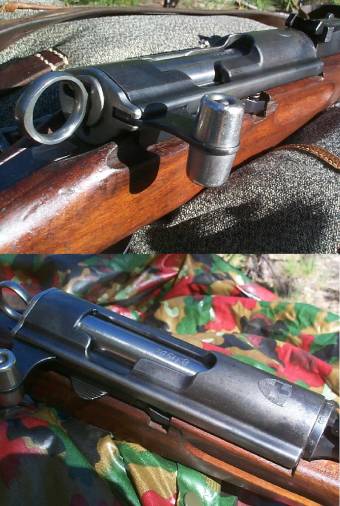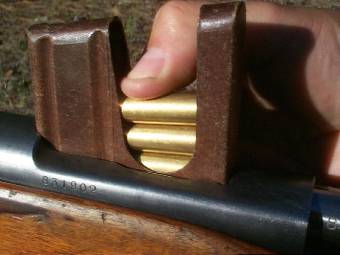On August 1st, 1291, on a small mountain named Rütli, the 3 states of
Uri, Schwyz, and Unterwalden united to forge their independence from
the growing reach of the Habsburg (Hapsburg) empire. From this kernel
arose the modern nation known as the Confoederatio Helvetica
(CH), or Switzerland.
Legend states that not long after the three states pledged their
mutual assistance pact, the Habsburgs sent a new sheriff by the name
of Hermann Gessler to the town of Altdorf in Uri. As a symbol of his
authority, Gessler had constructed a pole in the center of town, on
which he placed his hat. It was commanded that all townsfolk who
passed by the pole were to bow in respect.
It is not clear whether the man from the nearby town of Bürglen did
not know of the decree, or whether he purposely chose to flout the law.
Regardless, the man was immediately arrested when he passed by without
bowing. But since Gessler was in a playful mood, the man was given one
chance to save his life.
Since the man was known as an expert with a crossbow, Gessler offered
the man his freedom if he could shoot an apple from off the top of his
son’s head. If he refused, both he and his son would be executed.
The boy was tied to the pole and an apple was placed on his head. The
man put one arrow in his quiver and nocked another in his crossbow.
He fired and his aim was true.
Gessler was quite impressed by this show of excellent marksmanship. He
then made the mistake of asking why the man had placed a second arrow
in his quiver. The man from Bürglen looked Gessler straight in the eye
and told him that if the first arrow had struck his son, then the second
arrow would have been for him.
Well this just pissed Gessler off all over again. His previous offer to
the man from Bürglen was revoked and the man was sentenced to the dungeon
for life. However, the trip to the castle dungeon involved a long boat
ride across Lake Lucerne. During the trip, a fierce storm arose and the
man managed to escape.
Simply escaping was not enough. One dark night, not long after the escape,
the man found Gessler walking alone on a deserted lane. An arrow zipped
out of the darkness and found Gessler’s heart.
Over time, more states, or cantons, joined the Swiss confederation.
Switzerland has three official languages: German, French, and Italian.
German is exclusively spoken in 17 of the 26 Swiss cantons, French in
four, and Italian in 1. The remaining cantons are multi-lingual. Over
the centuries, however, the legend of William Tell has served to unite
and inspire all Swiss to remain forever free from outside interference.
It also underpins the Swiss tradition of excellence in marksmanship.
It actually wasn’t until the 1500’s though, that Switzerland’s famous
doctrine of strict neutrality began to take form. Switzerland’s neutrality
was first formally recognized in 1648 with the signing of the Treaty of
Westphalia.
When it comes to military firearms, the Swiss have always gone their
own way. The Swiss are well-known for fine engineering and high standards
of craftsmanship. When you mix those traits in with their strong belief
in neutrality, you can understand why the Swiss have never depended on the
equipment of any other nation to maintain their national defense.
When the smokeless era began, it was Colonel Eduard Rubin of the Swiss
army who invented the jacketed bullet as the solution to the problem of
high velocity accuracy with the new smokeless powder. Working with
Colonel Rudolph Schmidt, Rubin developed the 7.5mm Swiss cartridge which
was introduced in 1889 along with the first production version of the
Schmidt-Rubin straight-pull bolt action rifle.
Updated to its modern form in 1911, the Swiss 7.5mm cartridge remained
the standard until 1983 when the Swiss finally adopted a new cartridge
very similar to the 5.56mm NATO (in fact, it’s interchangeable). The
early version of the 7.5mm Swiss cartridge used a bullet with a diameter
of .304 inch. Since the 1911 update however, Schmidt-Rubin rifles and
the ammo have been made with a true .308 inch diameter, despite the
7.5 mm designation.
Switzerland has a unique military system. Theirs is a true militia
system which our founding fathers intended to emulate when our nation
was born. Every male citizen, upon reaching the age of 20 is inducted
into the militia and is given his initial military training. Upon
completing his initial training, the new militia member is sent home
with his uniform, his battle rifle (today, fully automatic) and a sealed
pack of emergency ammo.
The mandatory military service lasts until at least the age of 40 with
annual training periods much like our own National Guard. Additionally,
each member must perform his annual Obligatorisches Schiessprogramm
(Obligatory Shooting Program, literally), or what we might call mandatory
annual rifle qualification.
This annual shooting test consists of a total of 20 shots on two different
targets, all fired at 300 meters. Shots on the second target are under time
constraints. Out of a possible score of 85 points, the Swiss rifleman must
score a minimum of 42 points with no more than 3 zeroes. If he fails, he
must keep at it, but with ammo now at his own expense, until he passes.
Think about that for a minute -- every Swiss male is a long range iron
sight rifleman!
The Karabiner Model 1931
From its origin in 1889, the Schmidt-Rubin rifle design underwent a series
of refinements and configurations, finally culminating in the Karabiner
Model 1931 (K-31). There were later sniper variants made in low numbers,
but the basic model K-31 was adopted as the standard Swiss military rifle
in 1933 and was produced until 1958 when it was superceded by the first
Swiss assault rifle, the Sturmgewehre 57 (Stg 57 – again, a totally
home-brewed product). Over a half-million K-31s were produced over this
25 year time span.
For someone used to turn-bolt actions, the straight-pull Schmidt-Rubin just
plain looks weird! At first, I had no interest whatsoever in them. But
their reputation as an exceedingly accurate shooting machine was certainly
intriguing.
When I first started looking at them, I noticed that they sold for very
reasonable prices. I saw them in the low hundreds down at Big 5. But every
one I saw looked extremely beat up. The area of the stock just forward of
the buttplate was always the worst area. After doing some digging around for
info, I found out the reason for this. During their annual training exercises,
it was standard operating procedure for the Swiss to stack their rifles
together in a teepee arrangement using the stacking hook just under the rifle’s
muzzle. This left the butt of the rifle in contact with the ground for
extended periods of time. It may even have been common for the soldiers to
kick the bottom of their rifles gently to nudge the rifles into the teepee
configuration.
Despite the external appearance, perfect mechanical condition was always an
obsession with Swiss soldiers. The standard ammo, the 1911 version of the
7.5mm Swiss cartridge, known as Gewehrpatrone 11, or GP11, was never
corrosive. That fact, plus the expectation of frequent bore inspections, plus
the annual shooting test, made sure that the Swiss soldier kept his rifle in
top shooting form at all times. Therefore, today’s American surplus rifle
buyer can be reasonably assured that any K-31 he looks at will have a near
perfect bore, unlike many other surplus rifles on the market.
One of the most fascinating things about the K-31, is that very often, under
the buttplate of the rifle will be a small tag with the name, year of birth,
military unit assigned, and town of residence of the last Swiss citizen-soldier
to whom the rifle was issued! A few new American K-31 owners have written to
the former owners in hopes of receiving a response. What follows is one example:
Dear Mr. Hatcher,
I am writing to you on behalf of my friend, Mr. Paul Dreyer (D). You recently
purchased his former military rifle NR. 659 262 and asked for some information
about it. I will try to give you some.
First of all, as D was 20 (in 1949), like every young Swiss male, he had to join
the Army to receive his basic training. On July 11, 1949, D, who was trained as
a grenadier (elite infantry), received this rifle at the barracks in Locarno, a
little town located in the Italian part of Switzerland.
Let me explain to you that every Swiss male has to serve a total of one year
in the Army. First of all, he will receive basic training for 4 months.
After, he will be assigned to a reserve unit. For D, it was the 2nd company
of infantry battalion 19, regiment 8, 2nd infantry division, in which all
infantrymen of the canton of Neuchatel are assigned. The other 8 months time
will be served during annual training periods. After the age of 40, the
soldier doesn't serve anymore.
During his (part-time) duty, the soldier will keep his military rifle with all
of its equipment (his uniform also) at home and this with 24 rounds kept in a
metallic box. The Swiss Army is composed of reserve units that may be recalled
in case of war. These units do not join barracks but the battalion mobilization
place. These places are mostly located in remote places in the numerous forests
of the country. At the time of the cold war, the whole Swiss Army could be
mobilized in 48 hours. The soldier had his rifle and ammunition at home and
went directly to the mobilization place, being able to defend himself on his
way. There, of course, he was immediately operational. During the 20 years
of his duty, the soldier will, once a year, have to show that he is able to
shoot his rifle correctly. If he performs about 75% of the maximum possible
result, he will receive a special mention.
Which is also special in our country is that you can use your military rifle
for sports. By law, about 80% of the Swiss towns and villages have their own
shooting range. In these shooting ranges, located at 300m, you will find 2
kinds of electronically controlled targets. The first one, mostly used in
civilian competition, is round, one meter in diameter, on a white square
surface of 1.5m x 1.5m. The center of this circle is black and measures .5m.
It is this point that you have to aim at. A second target used in the military,
is the upper part (above the belt) of a soldier, on the same kind of surface.
This target however, is olive and the target soldier green. One sixth of the
incorporated men (about 320,000) shoot this sport (with their military rifle or
pistol), which is considered the national sport.
So, like many other soldiers, D was a real good shooter, both in the military
and as a civilian competitor. As proof, he showed me the prizes he won with
his (now your) rifle. This rifle is quite particular, because unlike the great
lot of these rifles, its stock is made of cherry wood (the others are normally
in walnut or beech). After 13 years of good use of this very good shooting
rifle (D told me he regretted having to give up this rifle for his whole life),
D had to exchange his K 31 for the new SIG 57 assault rifle (March 5, 1962),
because the Army had decided to introduce this new weapon. For many soldiers,
this was a terrible thing, because, the K 31 is still today recognized as a
very accurate rifle (much better than the SIG 57). After some years, many
soldiers (sport shooters) have been able to buy some of these rifles (like you).
But when you had to give back your rifle, you usually lost track. At the time,
(early sixties) very often also, the people could not afford the price they
were sold. It is only after many years, having lost their military value, that
they have become cheap. However, to buy a rifle remains very often a lottery.
D is now a retired railways employee. Living with his wife in the little
village of Les Verrieres, exactly located at the French border (close to the
French town of Pontarlier), he was very surprised to know that you were now
the owner of his former rifle. He asks you to take great care of it and not
to misuse it. So are the Swiss soldiers/civilian competitors, always in love
with their rifle.
I hope that I have been a true interpreter of my friend and wish you great
pleasure with that gun.
Yours truly,
LTC Jean-L. Glauser
(former US Army student)
My Own Little Swiss Miss
Maybe a month ago, I made the decision that I wanted to add a K-31 to my
collection. But the ugly stocks on most that I had seen did not make me in
any hurry. All the ones I had seen were stocked with a light-colored wood.
Later I was to learn that that wood was beech. After some more research, I
learned that earlier production K-31’s were mostly made with walnut stocks.
As a Curio & Relics license holder, I keep my eye on the internet sources of
military surplus rifles. I started looking out for anyone offering walnut
stocked K-31’s. I saw that Allan’s Armory was offering seven walnut K-31’s
all rated in G to VG condition. Allan has a good reputation on the ‘net for
conservative grading.
By the time I found his K-31 web page, five of the seven had already sold.
He was asking $140, a little more than what I had seen K-31s offered for at
Big 5 or at gun shows, but Allan specializes in cherry-picking the best guns
and offering a complete and detailed description of his rifles from the
milsurp collectors point of view. Or you can spend $189 for one down at
Arizona Sportsman. Without a C&R FFL, you’ll spend that much anyway, even
if you buy from Allan, after your local FFL applies his transfer fee. (Hint:
Getting a C&R FFL will cost you only $30, good for a period of three years!)
So I placed my order and waited for my Swiss Miss to arrive. In the meantime,
folks who had ordered from Allan before I did started posting on the Swiss
rifle message boards with photos of the rifles they had received from Allan –
which only whetted my appetite even further. The guy who had jumped earliest
on Allan’s offerings showed a couple of very nicely figured stocks, one
tiger-striped, the other with beautiful swirling patterns in the wood, which
may indeed have been one of the rare cherry stocks.
When mine arrived, the first thing I did was check for a tag under the butt plate.
Nope! The stock did not have any outstanding figure to the wood, instead it was
exactly what I had expected based on Allan’s description on the internet. He
described the stock as being in VG condition, with the metal holding about 40%
bluing. Yes, mine did show abuse of the stock just northward of the butt plate,
but there were no raw wood splinters or open scrapes or gouges as I had seen on
the typical Good rated specimens. On mine, the abuse mostly takes the form of
compression dings. I am hopeful that I can substantially steam out these dings,
then sand to near new condition.
One of the first things you notice when you pick up a K-31 is a big, bold Swiss
crest right on top of the receiver. Consisting of a cross in a shield, you are
left with little doubt as to the rifle’s country of origin.
The next thing you’ll notice is that peculiar bolt handle, which to me, looks a
lot like a miniature beer keg! Then you’ll notice the distinctive ring-shaped
cocking piece. As on Mosin Nagants, the safety is actuated by pulling back on
the cocking piece and twisting it to the side. This is substantially easier to
do with the Schmidt-Rubin due to the better grip the ring gives you.
K-31’s are not marked as to year of production, but year-by-year production
records by serial number are well documented. Mine is a 1944 production
specimen. Yes, mine is a war-year rifle, but as you know, the Swiss never
had to fire their Schmidt-Rubins in anger. Basically, Swiss military rifles
live their whole lives as target shooters!
With the K-31 now in my sweaty palms, I had a chance to actually run the bolt
for the first time. I wanted to understand exactly how this straight-pull
action operates. To cycle the action, all you do is grab that little beer keg,
pull it crisply straight back, then ram it crisply straight forward. Actually,
if the detachable six-round box magazine is empty, you will not be able to
close the action without first dropping the mag out of the receiver, or at
least depressing the magazine follower. Though it has a detachable box magazine,
soldiers were not issued extra mags. Quick reloading was done with stripper clips.
Just like most “normal” bolt actions, the K-31 bolt has two locking lugs up
front which rotate into receiver recesses as the bolt is pushed forward into
battery. The difference is that the rotation is accomplished by the last ½”
or so of bolt movement through the engagement of the operating plate with a
helical cut in the bolt sleeve. It is standard operating procedure to keep
the moving parts of the bolt well greased. This system does not have as
powerful a camming action as a normal turnbolt. When handloading for a
Schmidt-Rubin, you must full-length resize your brass. Otherwise,
you run the risk of misfires due to failure of the bolt to go fully into
battery.
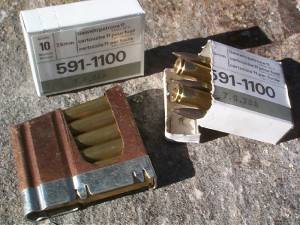
|
Feeding a K-31
Probably the biggest downside to the K-31 is the thin availability of ammo.
In loaded ammo, there are only a few choices. First there is the ammo that
the rifle was designed for; Swiss military surplus GP11. Mail order, the
cost is about $28-$30 per 60 rounds, plus shipping. Locally, I’ve found GP11
at Arizona Sportsman for around $7.50 for a box of 10. This ammo spits out a
174 gr. FMJBT at around 2640 fps. It is very accurate, and due to what is
basically a Very Low Drag (VLD) bullet design, does extremely well at long
range. It is non-corrosive, but Berdan primed. In commercial loadings,
there’s a Norma 180 gr. softpoint load at around $40 for a box of 20 (wow!).
Hornady has produced a limited run of 7.5 Swiss loaded with their 165 grain
BTSP. This ammo is available exclusively from Graf & Sons. Finally there’s
Portuguese-made FNM/Indep FMJ. This ammo is low quality (I’ve seen wrinkled
case shoulders and necks) loaded to relatively low velocity. However, this
ammo is cheap, and it’s boxer primed for reloadability.
For handloaders, the good news is that you can use standard .308 inch bullets.
I’ve pulled and measured a Swiss GP11 bullet, and the results were interesting
to say the least. The first thing that you’ll notice about the GP11 bullet is
its radical boat-tail design. It has a very strong taper on the back end.
Also, there is a deep crimping groove in the middle of the projectile. Getting
out the dial calipers, I measured a bullet diameter of .302” just forward of the
crimping groove. The long taper to the bullet tip starts almost immediately
forward from there. Going behind the crimping groove, I measured a diameter of
.305”. It wasn’t until I got to the most rearward part of the bullet, just ahead
of the start of the boat-tail taper, that I measured the maximum diameter of .307”.
These measurements tell me that the forward part of the bullet does not engrave
deeply into the rifling, but “surfs” the lands. It’s the rearward part of the
bullet that acts as a “driving band” for the bullet. This design helps keep
chamber pressures down because bearing surface is minimized.
Norma cases are available, but expensive. The FNM/Indep cases are reloadable
also, as mentioned previously. Recently, reloading supply house
Graf & Sons has introduced
brass for a number of the less common military calibers including 7.5x55 Swiss
(Graf headstamp).
The one other solution used by many Schmidt-Rubin owners is to use .284
Winchester brass. The .284 Winchester case is very close dimensionally to
7.5 Swiss. the main differences are that the Winchester head dimension is
.005” larger (.500” compared to .495”), but the rim diameter is .022” smaller
(.473” compared to .495”). The shoulder position on the Winchester case is
also .022” longer than the Swiss case, but that is easily remedied in the Swiss
resizing die. Reports are that the smaller rim diameter causes no problems with
extraction.
Load data is available in at least the Hodgdon, Hornady, and Sierra manuals.
You will also find load data on the internet on the various Swiss rifle
websites.
Accessories
Allen’s Armory included a correct, Swiss-marked sling and a muzzle protector
with the rifle. The sling is heavy, top-grain leather, and was dry and stiff.
A little leather dressing made the sling supple again. The muzzle cap is a
little aluminum do-hickey that clips over the front sight and muzzle for the
purpose of keeping snow or other crud out of the muzzle while on the march.
I ordered 120 rounds of GP11 from an online ammo supplier, and he threw in 20
Swiss stripper clips in the deal. Purchased separately, they normally sell for
$2 to $4 each. What a deal!
Examining these stripper clips, you are reminded once again how the Swiss
like to do things their own way. The body of the charger is made of a waxed
fiber-board type of material with the opening reinforced with thin tin. There
are four bendable tabs on the tin portion which can be bent open to load the
stripper, but are bent in to retain the rounds when loaded to their six round
capacity. The tabs easily spread open when the rounds are pushed down into the
magazine.
Just for fun, I also ordered a period-correct Swiss ski-trooper rucksack and
bread bag (brotsack) from Cheaper Than Dirt. The pack is made of a thick,
tight-weave “salt-and-pepper” cotton canvas. The straps, bottom, and trim are
made of full-grain leather. Talk about Swiss quality construction! It has an
internal frame consisting of two wooden stays, plus a suspension strap that hits
you in the small of the back to create ventilation between your back and the pack.
What’s unique is that it has a vertical “tunnel” that goes through the center of
the pack designed specifically for carrying your K-31 while skiing!
I also hit Allied Surplus here in town and picked up a Swiss “alpenflage” rain
poncho. Alpenflage dates from the 60’s and 70’s I think, so the poncho is not
really a period match with the pack and the rifle, but hey, it’s Swiss!
The Spirit of an Old Warrior
Every time I “get into” a new milsurp, there naturally flows an educational
process about the history and the national culture that created the implement.
This milsurping hobby is about so much more than just the firearms themselves.
Old military rifles are infused with the culture and “warrior spirit” of the
nation that they come from. After I’ve educated myself, whenever I pick up
one of these old rifles, I swear that I can feel some of that nation’s culture
and spirit flowing from the rifle, through my hands, and into my being. You
just don’t get that kind of “soul” with a modern gun.

![]()
